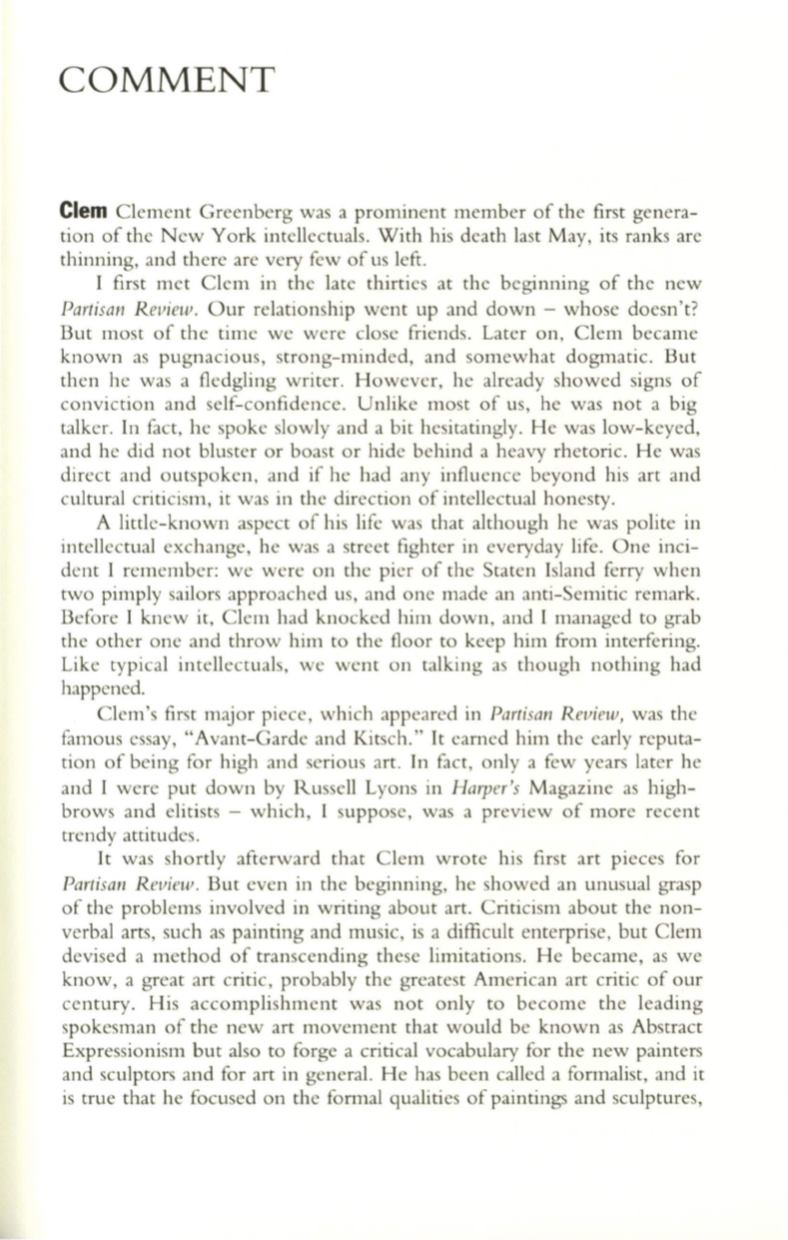
COMMENT
Clem
Clement Greenberg was a prominent member of the first genera–
tion of the New York intellectuals. With his death last May, its ranks are
thinning, and there are very few of us left.
I first met Clem in the late thirties at the beginning of the new
Partisan Review.
Our relationship went up and down - whose doesn't?
But most of the time we were close friends. Later on, Clem became
known as pugnacious, strong-minded, and somewhat dogmatic. But
then he was a fledgling writer. However, he already showed signs of
conviction and self-confidence. Unlike most of us, he was not a big
talker. In fact, he spoke slowly and a bit hesitatingly. He was low-keyed,
and he did not bluster or boast or hide behind a heavy rhetoric. He was
direct and outspoken, and if he had any influence beyond his art and
cultural criticism, it was in the direction of intellectual honesty.
A little-known aspect of his life was that although he was polite in
intellectual exchange, he was a street fighter in everyday life. One inci–
dent I remember: we were on the pier of the Staten Island ferry when
two pimply sailors approached us, and one made an anti-Semitic remark.
Before I knew it, Clem had knocked him down, and I managed to grab
the other one and throw him to the floor to keep him from interfering.
Like typical intellectuals, we went on talking as though nothing had
happened.
Clem's first major piece, which appeared in
Partisan Review,
was the
famous essay, "Avant-Garde and Kitsch ." It earned him the early reputa–
tion of being for high and serious art. In fact, only a few years later he
and I were put down by Russell Lyons in
Harper's
Magazine as high–
brows and elitists - which, I suppose, was a preview of more recent
trendy attitudes .
It was shortly afterward that Clem wrote his first art pieces for
Partisan Review.
But even in the beginning, he showed an unusual grasp
of the problems involved in writing about art. Criticism about the non–
verbal arts, such as painting and music, is a difficult enterprise, but Clem
devised a method of transcending these limitations. He became, as we
know, a great art critic, probably the greatest American art critic of our
century. His accomplishment was not only to become the leading
spokesman of the new art movement that would be known as Abstract
Expressionism but also to forge a critical vocabulary for the new painters
and sculptors and for art in general. He has been called a formalist, and it
is true that he focused on the formal qualities of paintings and sculptures,


